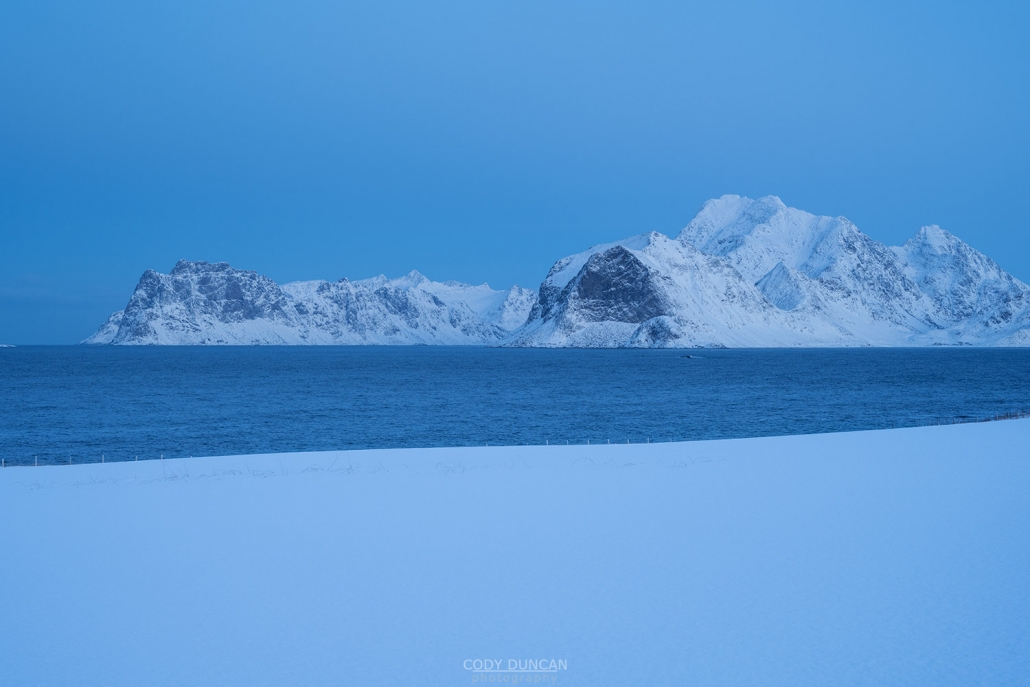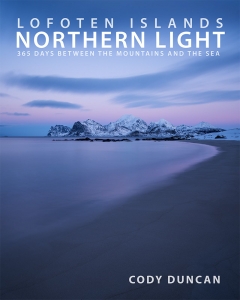Friday Photo #521 – Calm Between Storms

Photo: Winter blues of the polar night on Christmas day, Flakstadøy, Lofoten Islands, Norway. December 25, 2022. 12:56
The peaks of Himmeltindan rise into the pastel blues of twilight on Christmas afternoon in a rare moment of calm weather in the last week. Lofoten has been in full winter mode for several weeks now, and with that has been near daily storms and the usual flight and ferry cancelations. Even all the local buses were canceled this morning.
Although I miss the calm weather of the first half of December, the current storms are actually much more normal at this time of year. The holidays have seen Lofoten briefly filled with tourists and I see many of them walking the streets of Leknes in the noon twilight and blowing snow wondering what they have gotten themselves into. Although there has also been brief moments of dancing northern lights if one looked out the window at th right time.
The weather systems look like they will continue blowing across Lofoten over the weekend and into the new year. A friend and I had discussed plans for a midnight hike on new year’s eve to watch to fireworks from the mountains, but looking at the current forecast, a warm fire and whisky will probably be a better idea!
Now over a week past the winter solstice, I can slowly sense the days lasting longer – still not that long though! But soon it will be time to wait for the correct weather and head out for my fist glimpse of sunlight of the year. Although as I’ve previously written (Friday Photo #519), my last sighting of the sun this year was December 11th, so it not that long ago, and better than many years.
With the storms also usually come slightly warmer temperatures, and that is how the current forecast looks for the next week. Though with the existing snow base currently on Lofoten, it will take a prolonged period of heavy rain before most of the sea level snow even melts. So I’m cautiously optimistic that 2023 will be a good winter on Lofoten – both visually for my photo workshops and physically for lots of skiing. But of course like all things weather related in northern Norway, only time will tell…
Happy New Year from Lofoten! See you in 2023 and year 10(!!) of Friday Photo weekly ramblings.
Head over to my Instagram account for (almost) daily postings of the local conditions here on Lofoten: @distant.north
Camera Info:
Nikon Z7 II
Nikon 24-120mm f/4
53mm
ISO 100
f 8
1/5 second
WB Daylight







